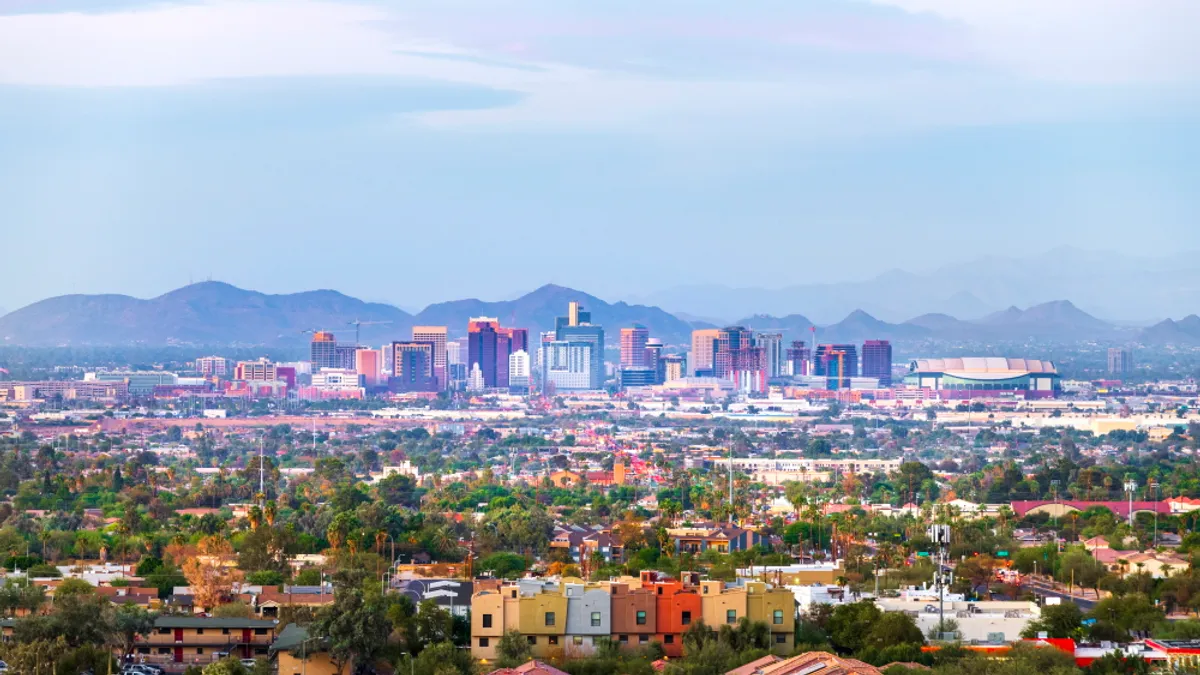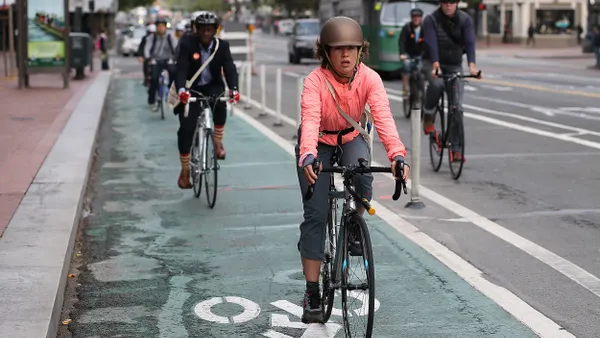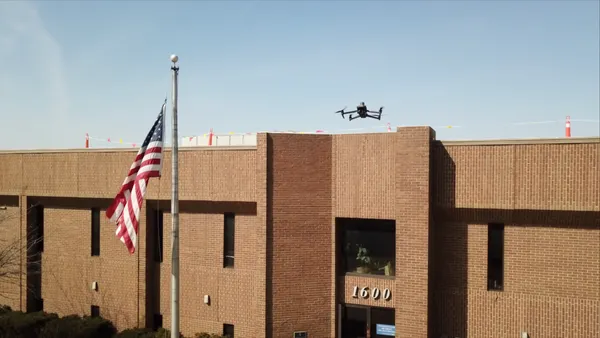Many Phoenicians are extraordinarily excited about the changes underway in their hometown and are eager to help shape an even more equitable, sustainable and prosperous future.
Downtown Phoenix, Inc.—a nonprofit organization whose mission includes helping the 90-block core of Downtown Phoenix grow sustainably and inclusively—is in a unique position to make a difference in a place with a fast-changing urban core. "We are building a center city where we haven't had one in decades, and we are in a place where we can help determine the future of our downtown in a way that many cities have already done," said Sara Scoville-Weaver, Sr. Business Development Manager for Downtown Phoenix, Inc.
An influx of talented and passionate people are helping to reimagine Downtown Phoenix. That's because a decades-long flight away from Downtown Phoenix has been reversed in the 21st century. The transformation began with the creation of large activity generators including two major sports arenas, theaters, Arizona State University's (ASU) Downtown Campus, the University of Arizona's College of Medicine/Phoenix, Phoenix Biomedical Campus, as well as the expansion and upgrading of Phoenix Convention Center.
The rebirth of Downtown Phoenix since the early 2000s continued with the arrival of local small businesses, art galleries, and residential density, which has included infill of vertical housing as well as restoration of neighboring historic homes.
ASU has played a notable role in bringing more than 15,000 students into the Downtown Phoenix core. This has helped to create a downtown community focused on innovation and entrepreneurship and a deep commitment to serving the public interest during a time of rapid and complex societal change.
ASU has been ranked number one in innovation for seven years in a row by U.S. News & World Report, besting schools like Stanford and MIT. ASU's culture of innovation is intentionally designed to benefit Phoenix. "In our charter we assume the fundamental responsibility of serving our community," said Chris Richardson, ASU's deputy chief information officer. "We have the latitude to apply that innovation mindset to benefit the health of the community and help do this through the ASU Smart City Cloud Innovation Center (CIC) powered by Amazon Web Services (AWS)."
Launched in 2019, the ASU Smart City CIC is a long-term partnership that combines ASU's research excellence with AWS Cloud, technology and innovation expertise in ways that foster community engagement and tackle the city and region's most pressing challenges, including addressing climate change, spurring economic activity, and improving education and healthcare.
The innovative work being spearheaded by the ASU Smart City CIC includes the development of a digital twin platform for Downtown Phoenix, Inc. "The best way to think of a digital twin model is like a 3D canvas for data; any object in the model, whether it's a building or a floor or object in the building, can be connected to any data system," said Michael Jansen, chairman and CEO of Cityzenith. "We built the digital twin of Downtown Phoenix working with the ASU Smart City CIC and leveraging AWS technologies like storage, compute, artificial intelligence and machine learning (AI/ML) and internet of things (IoT) to help us make more data-driven and inclusive decisions while also visualizing the impact those decisions can make on the city's future."
Data that once was stored in static Excel or PDF files and available only to a single city department or private business can now be aggregated into a digital twin. This has many potential benefits, not the least of which is to create a 3D visualization that allows citizens, businesses, policymakers and other stakeholders to quickly grasp the relevance of data.
"People who make decisions don't have time to wade through legions of data. They want to see it quickly, and they want to quickly understand the impact," said Scoville-Weaver. "It's one thing for me to say we need more day-care facilities in our downtown. It's another thing for me to show a map that doesn't include a single daycare on the light rail corridor."
But the value of the digital twin isn't only about aggregating otherwise siloed data and visualizing the world as it is today. It also allows for analysis and simulations of policy and investment decisions that can help accelerate and optimize decisions that benefit Downtown Phoenix. For example, phase one would be modeling where all the daycares are, followed by modeling the population data and breaking it down to know where elementary schools are, and eventually, applying tools to start informing where those daycare centers should be based on certain trends.
The digital twin can be used to guide better decisions about everything from the addition of pedestrian-friendly streets and bike lanes to historic preservation and sustainability measures to helping companies relocate to Downtown Phoenix. This work is aided in large part by the expertise of ASU professors and researchers. But beyond technology, what Scoville-Weaver and ASU's Richardson have found indispensable is how the ASU Smart City CIC powered by AWS has facilitated collaboration and provided a unique methodology for identifying challenges that need to be solved.
The center utilizes Amazon's Working Backwards process, which is used to develop the company's own products. It's an innovation process that is decidedly not technology focused; rather, it begins by deeply understanding human (i.e. customer) needs and works backwards from those to create the right solution to address those challenges. "Instead of coming in and saying here's my solution, here's my widget, here's my product, it will solve all your problems, we take a technology agnostic and open-source approach and ask who the user is," said Jason Whittet, the AWS digital innovation lead at the ASU Smart City Cloud Innovation Center. "We pose questions such as who is the customer we are trying to help? What is their problem? And then we work backwards from that starting point."
It's a process that is already bringing people together and, along with the digital twin, will ultimately lead to more impactful policy and business decisions. "I think the biggest goal with the digital twin and AWS process is to have citizens, neighborhoods, businesses and the city all engage and say this is the kind of city we want to see—this is the kind of data we all need to create a better city," said Scoville-Weaver.
Importantly, the digital twin initiative for Downtown Phoenix complements and augments similar work the city has been pursuing. For instance, the Phoenix city government has been implementing smart city applications to make accessing government services easier through early forms of digital twin technology, such as mapping and GIS (geographic information systems) databases.
The aspiration of the city as a whole matches that of Downtown Phoenix. "As both the technology and local government continues to evolve, we hope to find ways for digital twin technology to improve the city's data-driven decision-making processes across various functions," said Tony Motola, a senior policy advisor in the office of Phoenix Mayor Kate Gallego. "That could include complex infrastructure projects bound by strict rules of engineering, traffic management and mitigation, and urban planning."
To stay tuned for an update about this project and learn about more challenges, visit the ASU Smart City Cloud Innovation Center website.










